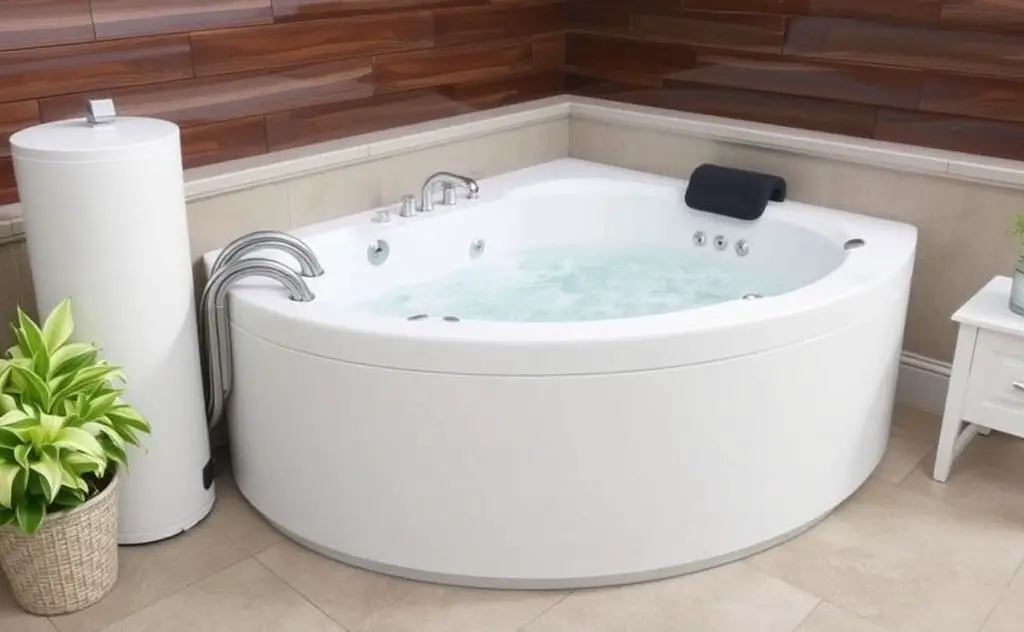For a jacuzzi tub, a water heater with a capacity of at least 50 to 80 gallons is recommended to ensure sufficient hot water for filling the tub comfortably and maintaining the desired temperature during use.
Choosing the right water heater size for your jacuzzi tub is crucial for enjoying uninterrupted hot water. A properly sized unit ensures you won’t run out of hot water mid-soak while optimizing energy efficiency. This guide covers everything from capacity calculations to heater types.

Key Factors in Water Heater Sizing
Several elements determine the ideal water heater size for your jacuzzi tub:
Tub Capacity
Standard jacuzzi tubs typically hold 60-80 gallons. Measure your tub’s exact capacity – this is your starting point for calculations.
Peak Demand
Consider other simultaneous hot water needs like showers or dishwashing. The BTU requirements increase with multiple fixtures.
Recovery Rate
This measures how quickly the heater can replenish hot water. Higher recovery rates mean smaller tanks can suffice.

Water Heater Types Compared
| Type | Pros | Cons | Best For |
|---|---|---|---|
| Storage Tank | Lower upfront cost, simple installation | Limited hot water supply, standby heat loss | Smaller tubs (40-50 gal) |
| Tankless | Endless hot water, energy efficient | Higher initial cost, may need multiple units | Large tubs, whole-house use |
| Hybrid | Energy efficient, good recovery rate | Larger footprint, higher cost | Medium-large tubs (60-80 gal) |
Sizing Guidelines
Storage Tank Heaters
For tank models, your heater should be at least 2/3 the tub’s capacity:
- 50 gal tub → 40 gal heater minimum
- 75 gal tub → 50 gal heater minimum
- 100 gal tub → 80 gal heater minimum
Tankless Systems
Tankless units are rated by flow rate (GPM). For jacuzzi tubs:
- Standard tubs: 6-8 GPM unit
- Large tubs: 9-11 GPM unit
Consider a recirculating pump for faster hot water delivery.
Installation Considerations
Space Requirements
Measure your mechanical room carefully. Tank heaters need more space than tankless models.
Venting
Gas models require proper venting. Direct vent vs power vent systems have different space needs.
Electrical/Gas Service
Verify your home’s capacity for the new unit’s requirements.
Energy Efficiency Tips
- Insulate pipes to reduce heat loss
- Consider a water heater blanket for tank models
- Set temperature to 120°F (49°C) for optimal efficiency
- Regular maintenance improves performance
Professional Help
While some homeowners attempt DIY installation, professional plumbers can:
- Properly size the unit for your specific needs
- Ensure correct installation and venting
- Handle gas line or electrical upgrades
- Provide warranty protection
According to energy.gov, proper sizing can reduce water heating costs by up to 30%.
The American Home Shield recommends considering both current and future hot water needs when selecting a unit.

